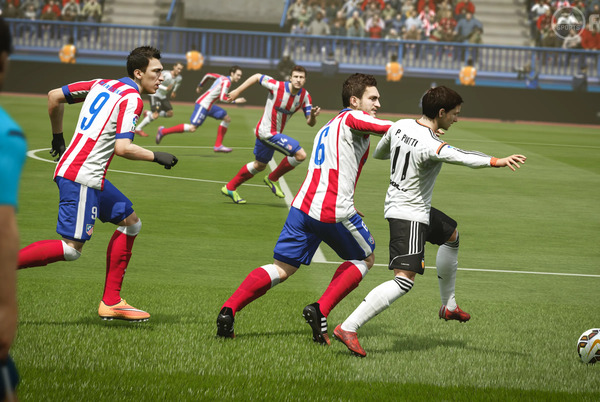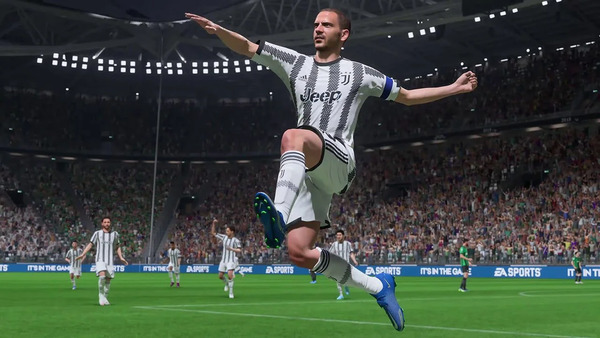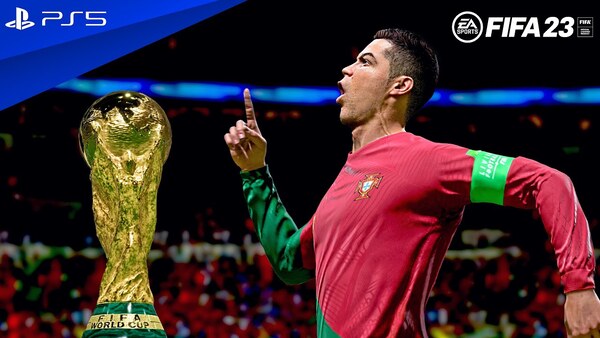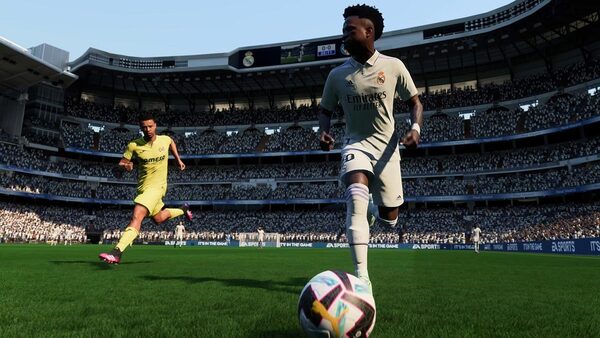Popular Now
Introduction
FIFA 23, the final entry in the long-running franchise under the "FIFA" name before transitioning to EA SPORTS FC, introduced several significant gameplay innovations. Among them, the evolution of passing mechanics stands out as a deeply impactful change that redefined how players control the pace and flow of matches. Far from just pressing a button to direct the ball, passing in FIFA 23 involves physics, player intelligence, skill timing, and a keen understanding of space and movement. This article delves into the intricacies of passing mechanics in FIFA 23, tracing their impact from basic ground passes to advanced through balls, manual techniques, and strategic application in different game modes.
Groundwork: Understanding the Basics of Passing in FIFA 23
The core foundation of passing lies in mastering the standard short pass and driven pass systems, both of which have evolved thanks to new animations and enhanced AI logic.

Short Passes (X/A Button)
The bread and butter of any midfield control strategy, the short pass in FIFA 23 has been improved with HyperMotion2 technology. Players position themselves more intelligently based on the angle and momentum of the passer. This minimizes awkward interceptions and promotes fluid transitions between players.
Driven Passes (R1+X/RB+A)
Driven passes are faster and more powerful but require precision. Misuse can result in turnovers or lost possession. In FIFA 23, the physics engine rewards players who master the balance between timing and direction.
List: Key Benefits of Basic Passing
-
Greater ball control under pressure
-
Builds confidence in possession-based tactics
-
Sets up more complex passes like through balls and lobs
Through Balls and Vision Passing
Through balls remain one of the most rewarding yet risky types of passes. FIFA 23 refines their use with a focus on player vision and AI movement.
Standard Through Balls (Triangle/Y Button)
A well-timed through ball can split defenses. In FIFA 23, through balls now take into account player acceleration curves, meaning the intended receiver's run path dynamically affects ball placement.
Weighted Through Balls (L1+Triangle/LB+Y)
This pass is slower but more accurate, allowing for better control when threading tight spaces. It’s essential for advanced playmaking and works exceptionally well with technically gifted midfielders like Modrić or De Bruyne.
List: Scenarios for Optimal Use
-
Counter-attacks with pacey wingers
-
Breaking high defensive lines
-
Coordinated 1-2 passing moves in the box
Lob Passes and Air Distribution
Air-based passing offers a vertical dimension to your gameplay. FIFA 23 introduces subtle changes that enhance trajectory realism and receiver anticipation.
Lob Passes (Square/X Button)
Ideal for wing switches and bypassing midfield congestion, lob passes now have more arcing curves and less ping-pong effect, making them more lifelike.
Lofted Through Balls (L1+Square/LB+X)
This advanced pass is great for bypassing a high-press midfield, especially when used by players with high Vision and Long Passing attributes.

List: Tactical Advantages
-
Bypasses midfield pressure
-
Switches play to isolate full-backs
-
Creates heading opportunities in the box
Manual Passing: For the Experts
FIFA 23’s manual pass (L2+R1+X / LT+RB+A) is a high-risk, high-reward feature that gives players full directional control.
Complete Autonomy
Unlike assisted passes, manual passing allows players to place the ball exactly where they want. This demands a thorough understanding of player positioning and game flow.
Skill Curve and Use Cases
Manual passes are difficult to master but invaluable when pulling off creative plays:
-
Diagonal long balls behind defenders
-
Precision layoffs in the box
-
Switching sides with pinpoint accuracy
Manual passing separates casual players from elite competitors, especially in FUT Champions and Division Rivals.
Player Intelligence and Passing Support
Player intelligence affects how well your teammates position themselves to receive passes. FIFA 23 elevates this through enhanced AI behavior.
Supporting Runs and Decoys
Off-ball players make smarter runs, creating better angles for passes. The AI also understands when to slow down or speed up to meet a pass without going offside.
Custom Tactics Integration
Your tactics now directly impact passing effectiveness:
-
“Possession” tactics favor short, controlled passes
-
“Long Ball” emphasizes deep, forward-looking passing
This results in more tailored and effective ball movement styles.
Passing in Tight Spaces: Mastering Tiki-Taka
The close-quarters passing game — known as tiki-taka — thrives in FIFA 23’s improved control responsiveness.
First-Touch Control
Short passes benefit from more accurate first touches, allowing players to immediately redirect the ball in tight areas.
Quick Passing Sequences
Players can now string together multiple one-touch passes without glitchy animations, especially effective in:
-
Midfield triangles
-
Box penetrations
-
Edge-of-box scoring setups
List: Key Players for Tiki-Taka
-
Pedri
-
Bernardo Silva
-
Marco Verratti
Passing in Career Mode: Building Midfield Engines
In Career Mode, player development and match objectives make passing even more important.

Growth Through Objectives
Midfielders grow rapidly if they succeed in completing passing challenges like “Complete 15 short passes” or “Create 3 scoring chances.”
Mentorship and Development Plans
Assigning passing-focused development plans improves stats like Vision, Long Passing, and Composure, turning prospects into elite playmakers.
This adds depth and longevity to Career Mode gameplay.
Passing in Ultimate Team: Chemistry and Precision
In FUT, chemistry affects how well players link up, which directly influences pass accuracy and ball control.
Chemistry Styles and Passing Boosts
Cards like “Architect” or “Maestro” enhance passing-related attributes. A high-chem link boosts reaction time and minimizes poor pass animation triggers.
Squad Building for Passing Mastery
Pairing players with strong club/nation links ensures:
-
Smooth transitions
-
More accurate one-twos
-
Better responsiveness in online play
Passing is often the deciding factor in tight Division Rivals or FUT Champs matches.
Skill Moves That Enhance Passing
Passing and skill moves can be combined for deceptive plays that disrupt defensive setups.
Pass + Move (L1+Pass)
After passing, the player immediately makes a forward run, enabling fast give-and-go setups.
Fake Passes (L2+Square or Circle then X)
Fake passes force defenders to shift or bite, creating open lanes. Combined with Player Lock (L3+R3), this allows total control over pass-and-run dynamics.
These techniques are key in breaking parked buses and tight man-marking systems.
Common Mistakes and How to Avoid Them
Even experienced players fall into bad habits. Recognizing and correcting these can dramatically improve your passing game.
Overusing Driven Passes
Driven passes are tempting but often intercepted. Use them sparingly and only when space allows.
Ignoring Player Momentum
FIFA 23’s physics means passing against the direction of a sprinting player often results in poor control or out-of-bounds errors.

List: Fixes and Tips
-
Aim for receiver’s stronger foot
-
Let passes “breathe” in possession play
-
Adjust pass power relative to distance and pace
Conclusion
FIFA 23’s passing system is a layered, nuanced mechanic that demands both technical skill and strategic foresight. From ground basics to advanced through balls and manual precision, every type of pass can become a deadly weapon in the hands of a thoughtful player. Mastering the interplay between movement, timing, and power elevates your gameplay across Career Mode, Ultimate Team, and online competition. Whether you're orchestrating tiki-taka sequences or launching pinpoint long balls, the key to domination lies in mastering the art of the pass.




















